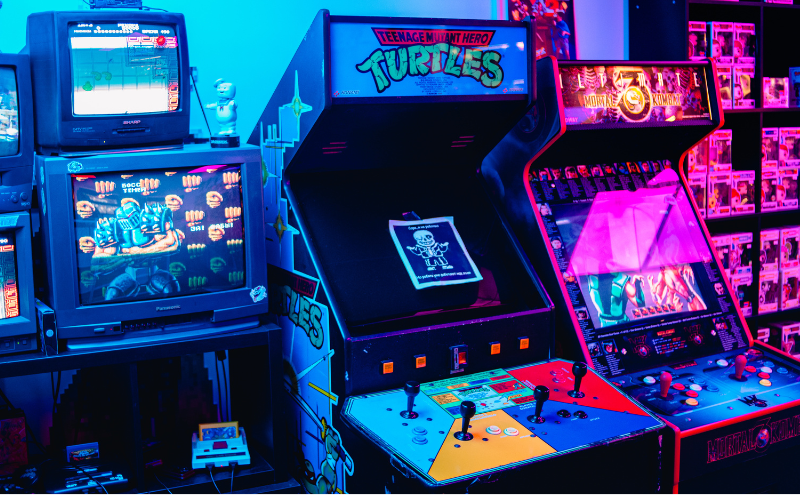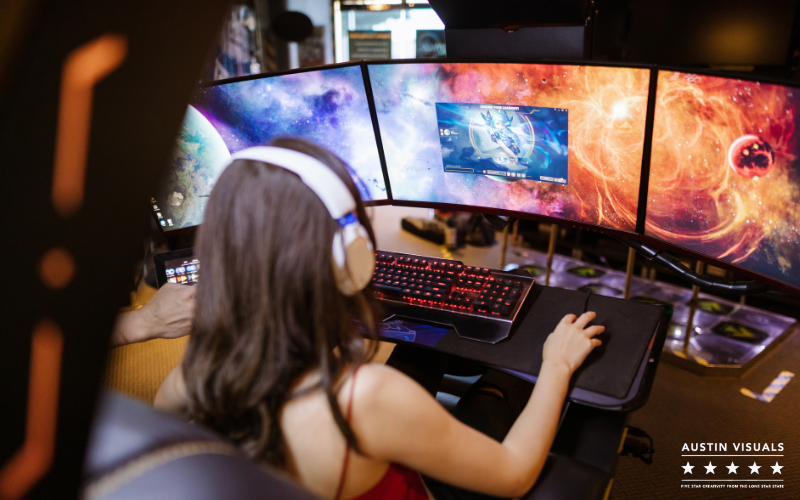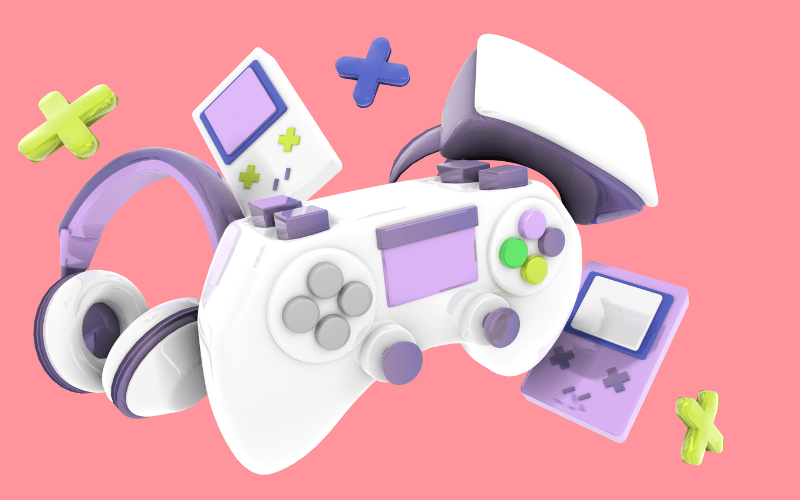
Video games have come a long way since the days of Pac-Man and Mario. From immersive worlds to realistic graphics, today’s video games can transport players to fantastical realms and take them on exciting adventures. But how do these astonishing visuals come to life? One key factor is 3D animation. In this blog post, we’ll explore the power of 3D animation in video games, and how it has revolutionized the industry over recent years. We’ll also look at some of the most popular 3D animations used in gaming today and their uses within modern gaming titles.
What is 3D animation?
3D animation is the process of creating three-dimensional moving images in a digital environment. 3D animators use software to create models, illustrations, and animations.
Game developers use 3D animation to create characters, objects, and environments. 3D animation adds depth and realism to the game world. It can also be used to create special effects.
3D animation is also a complex process that requires specialized skills and knowledge. Game developers typically work with teams of artists and animators. They may also outsource some or all of the game’s 3D animation to specialist firms.
The history of 3D animation in video games
The history of 3D animation in video games can be traced back to the early 1980s, when vector graphics were used for the first time in arcade games. In 1982, Sega’s Tron featured wireframe graphics, while 1983’s Star Wars: The Arcade Game was the first use of polygons in a video game. These early examples of 3D animation were limited by the technology of the time and could only render simple shapes and forms.
It wasn’t until the late 1980s and early 1990s that 3D animation began to be used more extensively in video games. In 1988, Namco released Splatterhouse, which featured rudimentary 3D graphics. This was followed by Virtua Racing (1992) from Sega, which is widely considered to be the first true 3D polygonal racing game. Other early examples include Wing Commander III (1994), Doom (1993), and Myst (1993).
With the advent of more powerful home consoles and PCs in the mid-1990s, 3D animation became increasingly commonplace in video games. Notable titles from this era include Super Mario 64 (1996), GoldenEye 007 (1997), The Legend of Zelda: Ocarina of Time (1998), Half-Life (1998), and Metal Gear Solid (1998). These games showcased the potential of 3D gaming and demonstrated how well it could be used for storytelling and world-building.
3D gaming would continue to evolve throughout the late 1990s and 2000s, with the PlayStation 2 and Xbox consoles ushering in a new era of visually impressive and immersive games. By the end of the decade, 3D animation had become an integral part of modern video games, and many titles featured highly detailed character models and environments. Today, 3D animation is used extensively in both console and PC gaming, with some of the most popular titles on the market utilizing it to create unique experiences.
How 3D animation is used in video games
Games often use 3D animation to create the characters, objects and scenery within the game. Many different software programs are available to help with the creation of 3D animation. Some popular programs include Autodesk Maya, Blender and Cinema 4D.
When creating a character, animators must take into account how the character will move and look within the game. They must consider the weight and proportions of the character as well as how it will interact with other objects in the game. Once the character is created, animators can then add movement and expressions. This process can be very time consuming, but it is essential to create realistic and believable characters.
Scenery also plays an important role in video games. Animators must create backgrounds that players will find believable and immersive. This can be a challenge, as they must again take into account various aspects such as lighting, shadows and perspective.
3D animation is an integral part of many modern video games and can greatly improve the gaming experience for players. With advances in technology, we can expect to see even more amazing examples of 3D animation in video games in the future!
The benefits of 3D animation in video games
For video game developers, 3D animation provides a number of advantages over traditional 2D animation. In addition to being able to create more realistic characters and environments, 3D animation also allows for more flexibility in the design process.
Because 3D models can be rotated and viewed from any angle, designers can experiment with different character designs and level layouts without having to redraw everything from scratch. This means that they can iterate on ideas more quickly, and ultimately create better games.
Another advantage of 3D animation is that it can be used to create cutscenes – short animated sequences that help advance the plot of a game. Cutscenes are becoming increasingly popular in games, as they allow developers to tell stories in a more cinematic way. And because 3D animation is so realistic, it’s the perfect tool for creating these kinds of scenes.
So if you’re a video game developer, consider using 3D animation to give your games an edge over the competition. With its many benefits, it’s sure to help you create better games overall.
The future of 3D animation in video games
3D animation is constantly evolving and improving. With the advent of new technology, the possibilities for 3D animation in video games are endless. Here are some of the ways that 3D animation will continue to shape the future of video games:
1. More realistic graphics. As technology advances, so does our ability to create realistic graphics. This means that the characters and environments in video games will become increasingly lifelike.
2. Increased use of motion capture. Motion capture is a technique that allows animators to capture real-life movement and translate it into digital form. This makes animations more realistic and believable.
3. Virtual reality gaming. Virtual reality is already being used in some video games, and it’s only going to become more popular in the future. With virtual reality, players will be able to immerse themselves in the game like never before.
4. Augmented reality gaming. Augmented reality is similar to virtual reality, but it doesn’t replace the real world; instead, it enhances it. This means that players will be able to interact with their surroundings in new and exciting ways.
5. More emotionally believable characters. As 3D animation technology improves, so does our ability to create emotionally believable characters. This means that players will be able to connect with characters on a deeper level than ever before.
The future of 3D animation in video games is an exciting one, filled with endless possibilities. With the right technology and creative minds, the possibilities are truly limitless.
Conclusion
3D animation is an invaluable asset to the video game industry. By utilizing highly detailed 3D models and textures, game developers can create unique gaming experiences that players enjoy. It allows for greater flexibility in character design and motion capture, which results in more immersive gameplay. With its wide range of applications, 3D animation has become a mainstay for video games of all genres. If you are looking to develop your own video game or improve upon existing ones, incorporating 3D animation into your project is definitely something worth considering!
Austin Visuals’ Cutting-Edge 3D Animation Service for Video Games
Austin Visuals offers top-notch 3D animation services for video games. We specialize in creating high-quality and realistic 3D models, characters, and environments that enhance the gaming experience for players. Our team of skilled 3D artists and animators works closely with game developers to ensure that our animations are seamlessly integrated into the game. Whether it’s creating new game assets or enhancing existing ones, we are committed to delivering stunning 3D animations that bring games to life.
Our Services
- 3D Animation Service for Video Games
- Commercial Video Production
- TV Advertising for Television and Web
- Branded marketing video production
- 3D Animation Techniques
- Medical 3D animation
- Explainer video production
- Virtual Reality VR / AR / 360
- Mobile application development
- Motion graphics
- Live video
- Also, Visual Effects (VFX)
- 2D Characters Cartoon Animation
Want to know how we can help? Have questions? Have a project to discuss? Message us using the contact form below, email us at [email protected]. Also, call us at (512) 591-8024 to meet with a member of our team today.
Have A Project You Want To Discuss? Drop us a line!







